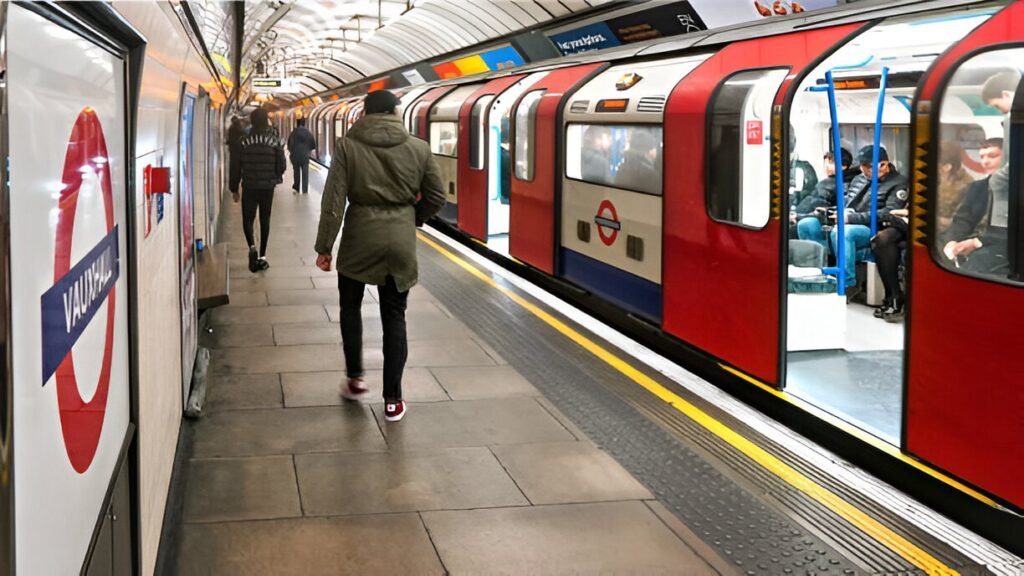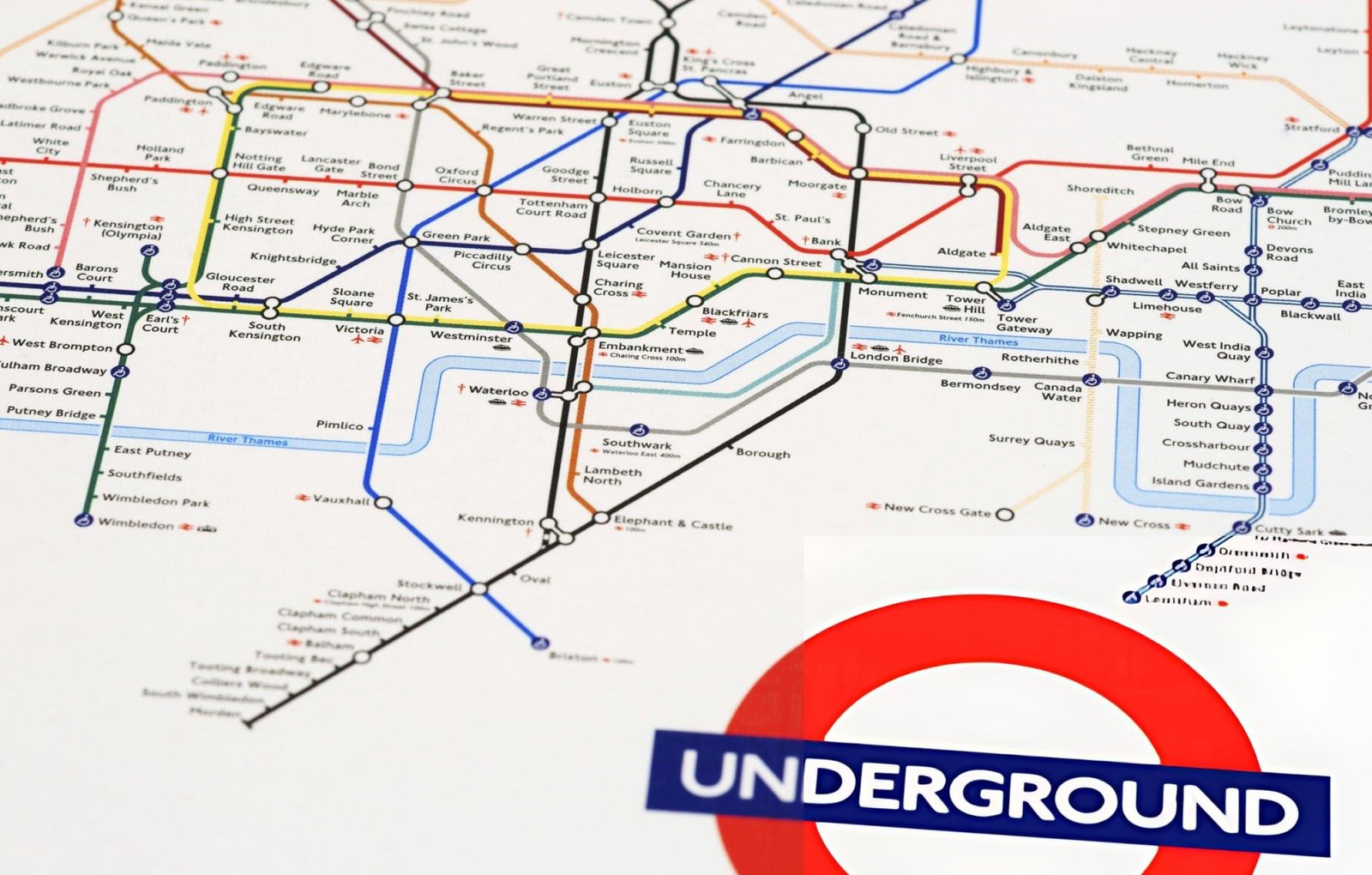metro London Underground Guide: Lines, Map, Timetable & Fares (2025)
This comprehensive guide to 2025 breaks down everything you need:
The Metro London Underground, affectionately called “the Tube”, is one of the world’s oldest and most efficient metro systems. Whether you’re a first-time visitor or a daily commuter, navigating its 11 lines, understanding fares, and mastering the map can be daunting.
This complete 2025 guide breaks down everything you need:
Lines & routes – Which Tube line goes where?
How to read the map – Zones, interchanges & best apps.
Timetable & operating hours – First/last trains & Night Tube.
Fares & cheapest tickets – Oyster vs. contactless vs. Travelcards.
Pro tips – Avoiding crowds, saving money & etiquette.
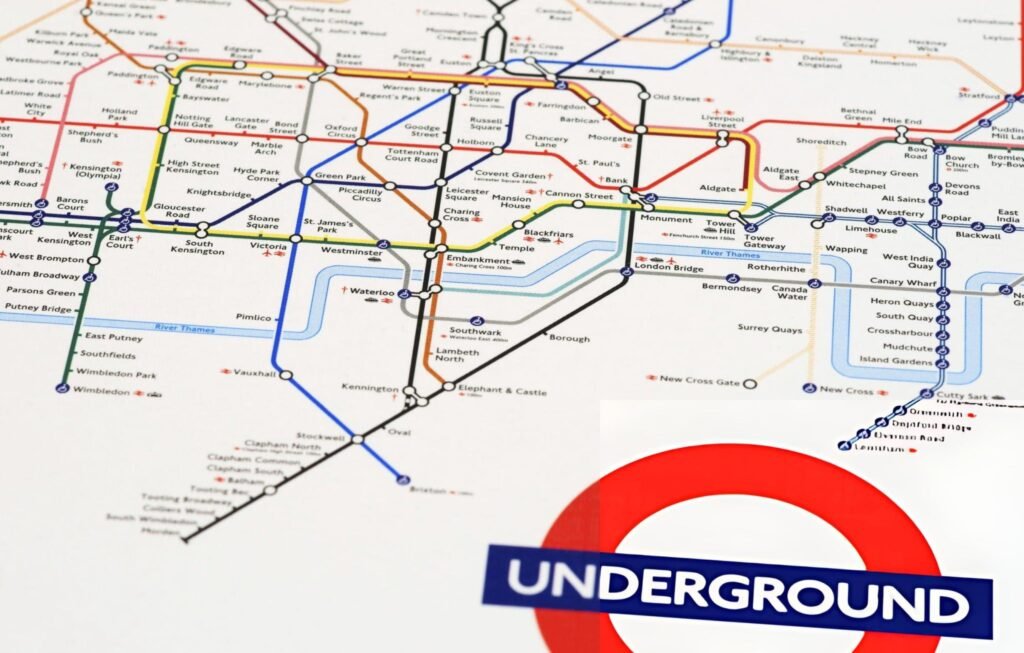

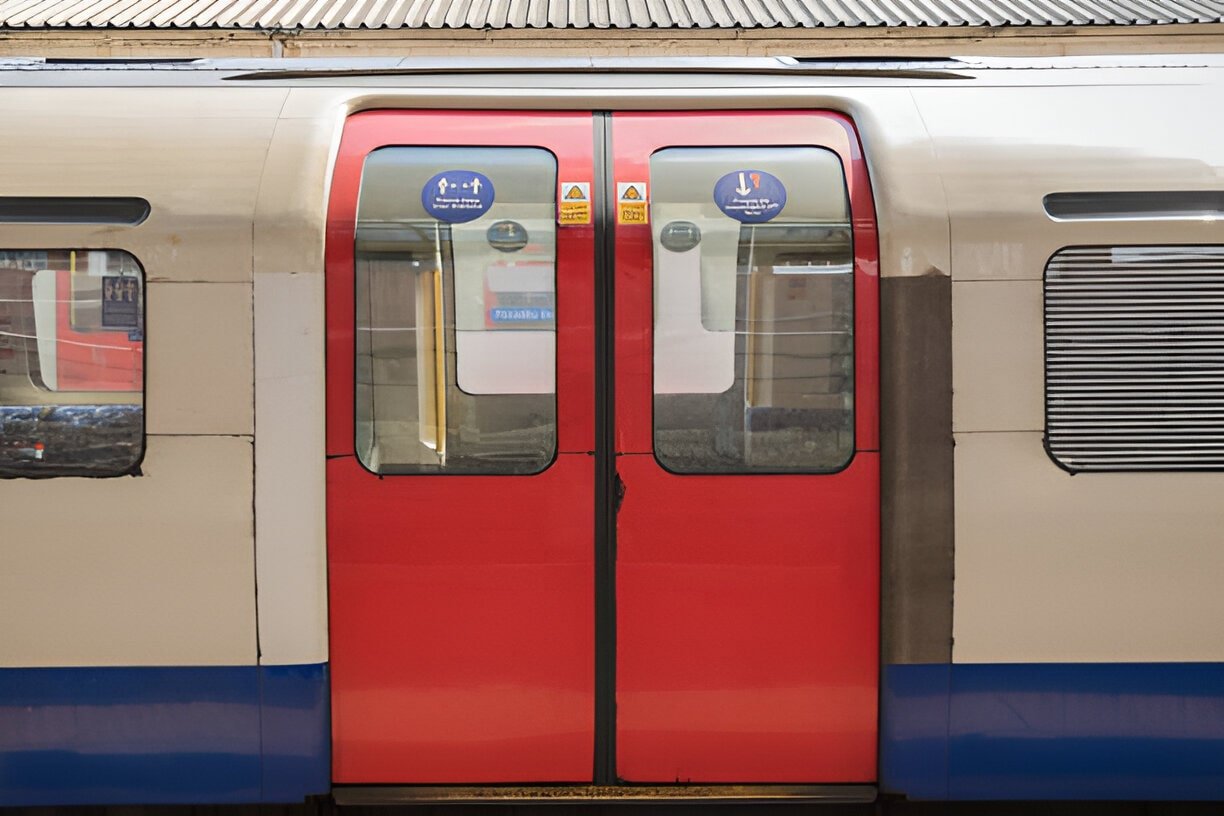

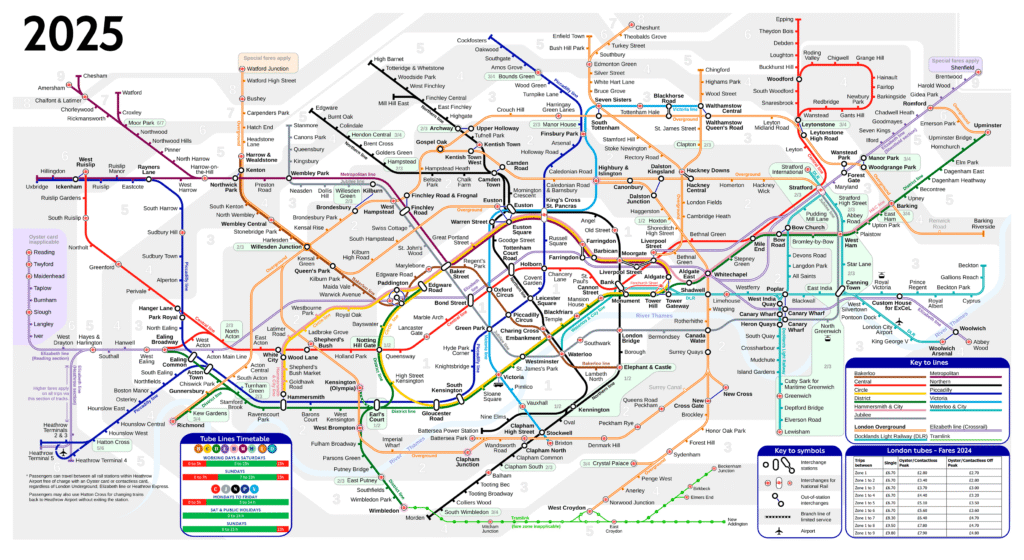
1. London Underground Lines (2025 Update)
The London Underground’s 11 iconic lines (plus the Elizabeth Line) form the fastest way to navigate the city. Here’s everything you need to know—from color-coded routes to the best lines for sightseeing.
| Line | Color | Key Stations | Best For | Frequency |
| Bakerloo | Brown | Paddington, Waterloo, Elephant & Castle | Northwest to Central London | Every 3-6 mins |
| Central | Red | Oxford Circus, Bank, Stratford | East-West cross-city trips | Every 2-3 mins (busiest line) |
| Circle | Yellow | King’s Cross, Victoria, Tower Hill | Looping central tourist spots | Every 8-10 mins |
| District | Green | Westminster, Kensington, Wimbledon | Museums & parks (e.g., Kew Gardens) | Every 4-8 mins |
| Hammersmith & City | Pink | Baker Street, King’s Cross | Connecting North London | Every 5-10 mins |
| Jubilee | Silver | London Bridge, Canary Wharf, Wembley | Modern, fast trains; major landmarks | Every 2-5 mins |
| Metropolitan | Purple | Baker Street, Harrow, Amersham | Outer Northwest London | Every 5-10 mins |
| Northern | Black | Camden Town, Leicester Square, London Bridge | North-South routes (two branches!) | Every 2-5 mins |
| Piccadilly | Dark Blue | Heathrow, Covent Garden, Arsenal | Airport access + West End | Every 4-7 mins |
| Victoria | Light Blue | Oxford Circus, Victoria, Brixton | Speedy North-South line | Every 2-3 mins |
| Waterloo & City | Teal | Bank, Waterloo | Shortest line (2 stations!) | Weekdays only |
The 11 Tube Lines (+ Bonus Elizabeth Line)
Special Mentions
Elizabeth Line (Not a Tube Line, But Essential)
- Color: Purple (but not on Tube maps).
- Key Route: Heathrow → Canary Wharf → Abbey Wood.
- Why It Matters:
- Faster trips (e.g., Heathrow to Tottenham Court Rd in 35 mins).
- Airport-friendly (no changes from central London).
Night Tube Services
Runs Fridays & Saturdays on:
- Central, Jubilee, Northern, Piccadilly, Victoria lines
- Frequency: Every 10-20 mins until ~5 AM.
Best Tube Lines for Tourists
- Circle Line (Yellow) – Hits Tower Hill (Tower of London), Westminster (Big Ben), and South Kensington (museums).
- Jubilee Line (Silver) – Direct to London Eye (Waterloo), Wembley Stadium, and Canary Wharf.
- Piccadilly Line (Dark Blue) – Goes from Heathrow to Covent Garden (no changes!).
- District Line (Green) – Access Kew Gardens, Kensington Palace, and Tower Hill.
Pro Tip: Avoid the Northern Line’s Bank branch during rush hour—it’s London’s most congested route.
Major Interchange Stations
| Station | Lines | Why It Matters |
| King’s Cross St. Pancras | 6 lines + Eurostar | Gateway to Europe + Harry Potter photo op. |
| Waterloo | 4 lines + National Rail | London Eye, South Bank, and trains to Surrey. |
| Bank/Monument | 5 lines | Walk between lines (takes 5 mins—follow signs!). |
Line Quirks to Know
- Northern Line has two branches (Charing Cross vs. Bank)—check your train’s destination!
- Waterloo & City Line closes weekends and evenings (it’s for City workers).
- Circle Line isn’t a full loop—it spirals out to Hammersmith.
2. How to Use the London Underground Map

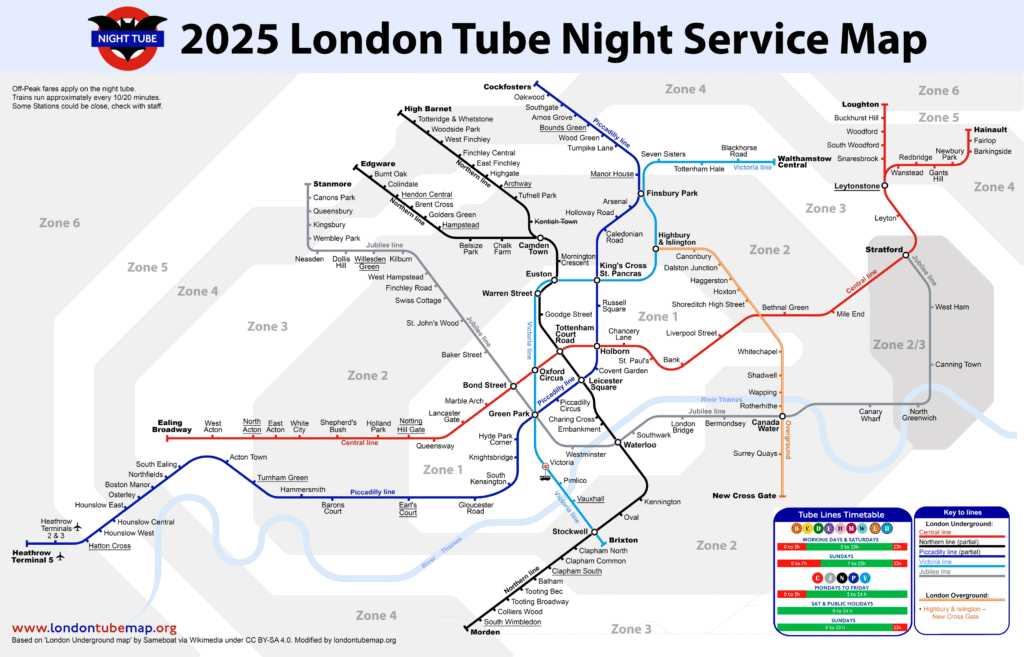
Understanding the Map
- Zones 1–9: Central London is Zone 1; fares increase as you go outward.
- Interchange symbols: White circles mark stations where lines cross.
- Dotted lines: Indicate walking connections (e.g., Bank/Monument).
Best Digital Tools
- Official TfL Map: Download here.
- Citymapper/Google Maps: Real-time delays and step-free access filters.
Pro Tip: Screenshot your route—Wi-Fi/cell service is spotty underground!
3. London Underground Timetable (2025)
- First trains: ~5 AM (varies by line).
- Last trains: ~12:30 AM (to 1:30 AM on Night Tube lines).
- Frequency:
- Peak: Every 2–5 minutes.
- Off-peak: Every 5–10 minutes.
Check live updates on the TfL website or @TfLTravelAlerts (Twitter).
4. London Underground Fares: Cheapest Options (2025)
Navigating Tube fares can be confusing—but this breakdown makes it simple. Here’s everything you need to know about Oyster vs. Contactless, peak pricing, daily caps, and hidden discounts to save money on your journeys.
Fare Types Explained
1. Pay-As-You-Go (Contactless & Oyster)
- How it works: Tap your contactless card/phone or Oyster card to enter/exit stations.
- Best for: Tourists and occasional riders.
- Pros:
- Automatically calculates cheapest fare.
- Daily cap limits your spending (e.g., £8.10 in Zones 1–2).
- Cons: Slightly more expensive per trip than Travelcards for heavy users.
2. Travelcards (Paper/Digital)
- How it works: Unlimited travel for 1 day, 7 days, or 1 month in selected zones.
- Best for: Commuters or tourists making 3+ trips daily.
- 2024 Prices (Zones 1–2):
- 1-Day: £15.20 (anytime) / £15.20 (off-peak from 9:30 AM).
- 7-Day: £40.70 (unlimited).
- Pro Tip: Only worth it if you’ll exceed the daily cap multiple times.
Peak vs. Off-Peak Pricing
- Peak Hours:
- Weekdays 6:30–9:30 AM & 4–7 PM (more expensive).
- Off-Peak Hours:
- All other times, including weekends (cheaper).
2025 Single Fares (Zones 1–2)
| Payment Method | Peak Fare | Off-Peak Fare |
| Contactless | £2.80 | £2.70 |
| Oyster | £2.80 | £2.70 |
| Paper Ticket | £6.70 | £6.70 (avoid!) |
Key Rule: Always use Contactless/Oyster—paper tickets cost 2.5x more!
Daily & Weekly Price Caps
Your spending is automatically capped with Contactless/Oyster:
| Zones | Daily Cap (Peak) | Daily Cap (Off-Peak) | 7-Day Cap |
| 1–2 | £8.10 | £7.70 | £40.70 |
| 1–4 | £12.50 | £11.70 | £63.30 |
Example: If you take 3 Tube trips in Zones 1–2 (£2.80 x 3 = £8.40), you’ll only pay £8.10 (the cap).
Pricing by Zones (1–9)
Fares increase as you travel further out:
| Journey | Peak Fare | Off-Peak Fare |
| Zone 1 only | £2.80 | £2.70 |
| Zones 1–3 | £3.40 | £3.30 |
| Zones 1–6 (Heathrow) | £5.60 | £3.60 (off-peak) |
Airport Warning: Peak fares to Heathrow (Zone 6) cost £5.60, but off-peak is just £3.60!
Discounts & Savings
1. Children
- Under 11: FREE (with paying adult).
- 11–15: 50% off with a Zip Oyster Photocard.
2. Seniors (60+)
- Free travel with an Older Person’s Freedom Pass (UK residents only).
3. Railcards (16–30, Veterans, etc.)
- 1/3 off off-peak fares when linked to Oyster (saves £100s/year).
- Eligible cards: 16-25, 26-30, Veterans, Disabled Persons.
4. Group Travel Tips
- 10+ people? Request a Group Day Travelcard (saves ~20%).
- Families: Use 1 adult + 4 kids = kids travel free.
Top Money-Saving Hacks
✔ Walk short Zone 1 trips (e.g., Leicester Sq → Covent Garden = 4 mins).
✔ Travel off-peak (saves 10–50%).
✔ Use Contactless (no Oyster deposit + Apple/Google Pay works).
✔ Avoid paper tickets (they’re a rip-off).
Common Mistakes to Avoid
❌ Not tapping out (you’ll be charged a £8.10 penalty fare).
❌ Using the wrong card (only tap ONE card per journey).
❌ Forgetting Railcard discounts (register at Tube stations).
5. Essential Tips for Riding the London Underground Like a Pro
The Tube is efficient, but mastering these unwritten rules will make your journey smoother, safer, and more pleasant—whether you’re a tourist or daily commuter.
Best Times to Avoid Crowds
- Peak Hours (Avoid If Possible):
- Weekdays 7:30–9:30 AM & 5–7 PM (packed with commuters).
- Weekend afternoons (shoppers and tourists flood central stations like Oxford Circus).
- Quieter Times:
- Mid-morning (9:30–11:30 AM) & early afternoon (2–4 PM).
- After 8 PM on weekdays.
- Night Tube (Fri/Sat): Least crowded after midnight.
Pro Tip: If you must travel in rush hour, board at the ends of the train (less crowded than middle carriages).
Tube Etiquette: Do’s & Don’ts
✔ Stand on the RIGHT on escalators (left side is for walking).
✔ Let passengers off first before boarding—blocking doors is a cardinal sin!
✔ Move down inside the carriage to avoid crowding doors.
✔ Offer seats to elderly, pregnant, or disabled passengers.
✔ Keep bags off seats during busy times.
❌ No loud conversations/music—silence is golden.
❌ Avoid eye contact (yes, really—Londoners value their personal space).
Bonus: If you hear “Mind the Gap,” you’re officially a Tube rider.
Accessibility Info (Step-Free Stations)
Not all stations have lifts—only ~25% are fully step-free. Key accessible stations:
- King’s Cross St. Pancras (major interchange, lifts to all lines).
- Westminster (Elizabeth Line step-free access).
- Green Park (elevators to Piccadilly/Victoria Lines).
- Heathrow Terminals 1-3 (step-free from street to train).
Useful Tools:
- TfL’s step-free map (download here).
- “Please Offer Me a Seat” badge (free for those who need priority seating).
Safety & Pickpocket Warnings
The Tube is generally safe, but stay alert:
- Hotspots for theft:
- Oxford Circus, Leicester Square, Piccadilly Circus (crowded tourist zones).
- Central Line during rush hour (tight spaces = easy targets).
- Protect Yourself:
- Wear backpacks on your front in crowds.
- Keep phones/wallets secure—pickpockets often strike when doors close.
- Use card sleeves to block contactless theft (yes, it happens).
- Emergency: Press the yellow passenger alarm in trains or find staff (in blue uniforms).
Final Pro Tips
- Carry water (some deep-level lines get VERY hot).
- Download offline maps (no signal in tunnels).
- If lost, ask staff—they’re famously helpful (and often witty).
Now you’re ready to ride like a Londoner!
6. Where to Buy London Underground Tickets (2025 Guide)
You have several easy options to buy tickets for the Tube—here’s the full breakdown, including which method is cheapest and most convenient.
1. At the Station
Oyster Cards
- Where to buy:
- Ticket machines (all Tube stations)
- Ticket offices (major stations like King’s Cross, Victoria)
- Cost:
- £7 deposit (refundable when you return the card).
- Top up with pay-as-you-go credit or Travelcards.
- Best for: Tourists staying 3+ days or frequent travelers.
Paper Tickets (Single/Return)
- Where to buy: Ticket machines only.
- Avoid if possible! They cost 2–3x more than Oyster/Contactless.
- Example: Zone 1 single = £6.70 (vs. £2.80 with Oyster).
2. Contactless Payment (No Ticket Needed!)
- How it works: Tap your debit/credit card (Visa/Mastercard) or phone/watch (Apple/Google Pay) at gates.
- Best for: Tourists staying 1–2 days (no upfront cost).
- Key perks:
- Same price as Oyster + daily cap (e.g., £8.10 in Zones 1–2).
- No foreign transaction fees (check with your bank).
3. Online & Mobile Options
Oyster Card Online
- Order in advance (for pickup at Heathrow/selected stations): TfL Visitor Shop.
- Pros: Skip queues + special discounts (e.g., 10% off at restaurants).
Travelcards (Digital/Paper)
- Buy 7-Day/Monthly Travelcards online:
- TfL Website (load onto Oyster).
- National Rail app (for paper tickets).
4. Other Places to Buy
- Heathrow Airport: Oyster/ticket machines at all terminals (Tube station entrance).
- Local Shops: Look for the “Oyster Ticket Stop” sign in convenience stores.
- Visitor Centres:
- Victoria Station
- Liverpool Street Station
Important Tips
✔ Always use Contactless/Oyster—paper tickets are a rip-off.
✔ Foreign cards work, but check for fees (Revolut/Monzo are best).
✔ Kids under 11 travel free (just walk through the gate with them).
✔ Lost Oyster card? Register it online to protect your balance.
Cheat Sheet: Best Payment Method
| Your Trip | Best Ticket |
| 1–2 days | Contactless |
| 3+ days | Oyster Card |
| 7+ days/unlimited | Travelcard |
| With kids under 11 | Contactless (kids free) |
FAQs
Q: Can I use my foreign contactless card?
A: Yes! Visa/Mastercard from abroad work (but may have fees).
Q: Is the Tube cheaper than taxis?
A: Yes—a Zone 1–2 trip costs £2.80 vs. £15+ in a cab.
Q: What if there’s a strike?
A: Check TfL’s status updates for buses/trams as alternatives.
Final Thoughts
The Tube is the fastest way to explore London, but mastering fares and routes saves time and money. Bookmark this guide, download a map, and tap in with confidence!
